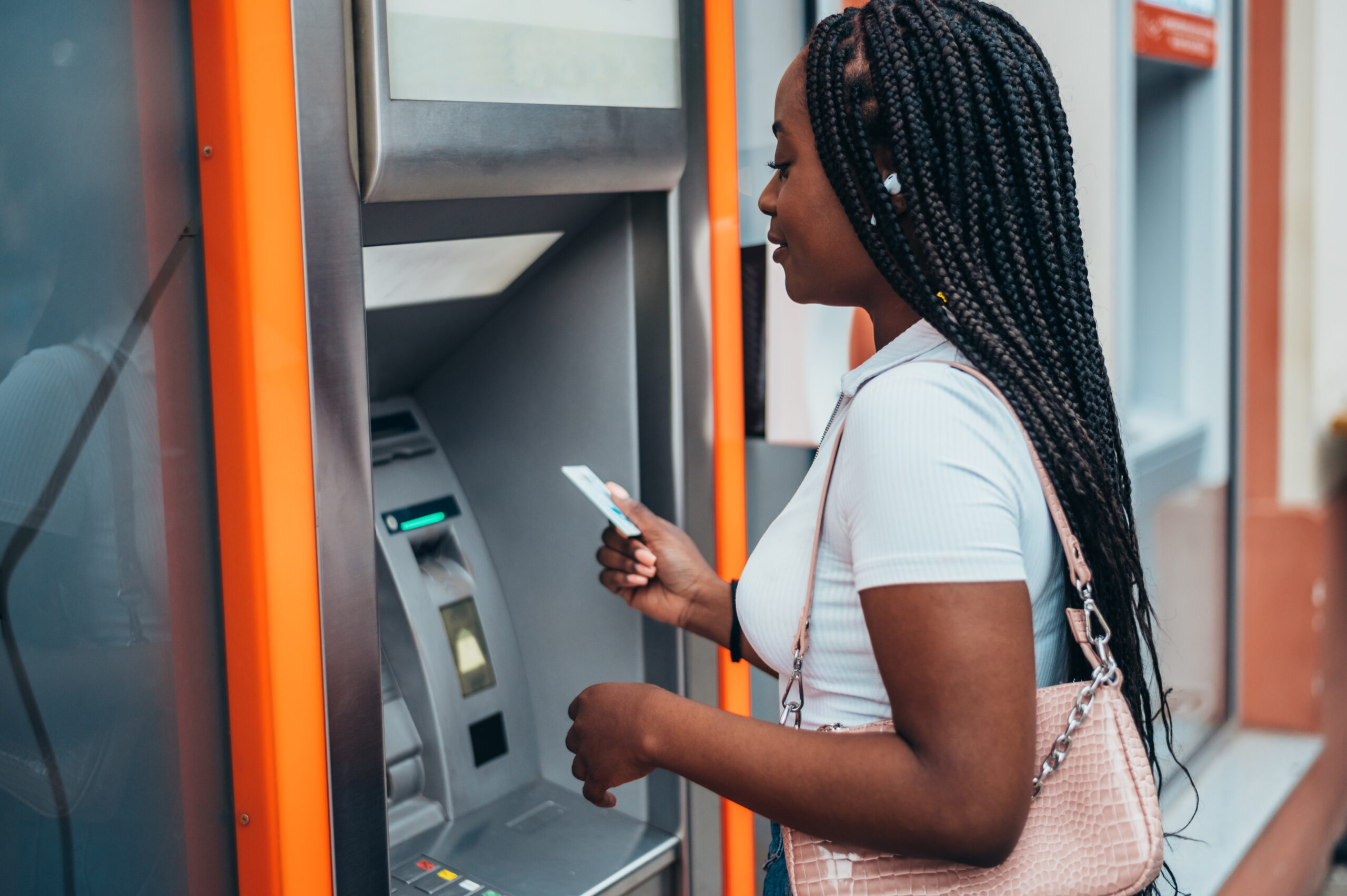The relationship between Black people and capital is rife with pain and unforgivably intertwined with human cruelty and subjugation. The United States financial system is a balance of credits and debts attributed to an individual. In the 18th and 19th centuries, enslaved Black people represented a form of acceptable capital, securities, and collateral in the country’s financial system. To this end, Black people were used as capital to secure land and property mortgages, purchase other enslaved persons, and were used as settlements for accrued debts.63 Making the transition from being considered capital to overcoming policies that restrict access to capital for Black persons in this country is anything but straightforward.
As the country solidified its banking infrastructure, Black people remained excluded from accessing the same financial institutions as white persons until 1868, when the 14th Amendment was passed. As a result, Black-owned and operated banks became an emergent solution. From 1888 to 1928, research shows that 40-57 Black-owned banks were chartered in the United States. The variation in number is due to a lack of coordinated efforts by monitoring agencies, consensus around the definition of a Black bank, and the knowledge that some banks may have had a short lifespan.64 During this time, more and more Black people gained the opportunity to move from a financial system rooted in borrowing and debt to one that emphasized saving, land ownership, and capital investment.
The mere presence of Black-owned banks in communities increased the number of Black persons who held a bank account. Accounts from Black bankers in 1906 recall that “in Richmond, one out of every nine Black residents had a bank account… Conversely, in Atlanta, where there were no Black-owned banks, only about one out of every 30 Black residents had a bank account.”65 This was a catalyst for the founding of the first Black bank in Atlanta in 1921, Citizens Trust Bank.66
Black Owned Banks and MDIs
Black-owned banks are categorized as Minority Depository Institutions (MDIs). An MDI is an institution where “(1) 51 percent or more of the voting stock is owned by minority individuals, or (2) a majority of the board of directors is minority and the community that the institution serves is predominantly minority.”67 The presence of MDIs is in decline; between 2008 and 2018, approximately one-third of minority-owned banks closed or merged. Black-owned banks have declined to represent only 20 out of 142 MDIs in 2020, down from 48 in 2001. Today, Citizens Trust Bank remains the sole Black bank in Atlanta.68
MDIs and Black-owned banks are important community fixtures because of their often-proximate location to minority communities. Black owned banks’ vested interest in who they serve empowers the financial institutions to approve Black applicant loans at a higher rate than other banks. Amidst the decline of bank branches in majority Black areas, it is increasingly important that MDIs are protected and seen as a resource.
CDFIs
Community development financial institutions (CDFIs) were established in 1994 by the Riegle Community Development and Improvement Act. The purpose of CDFIs is to invest in the economic revitalization and community development of low-income neighborhoods that are often overlooked. CDFIs can take the form of various financial institutions like banks, minority deposit institutions, credit unions, and loan funds. The social missions of CDFIs make them valuable resources for Black entrepreneurs and homeowners, as they often have more flexible underwriting criteria, lower credit score requirements, and are more likely to issue microloans.69
I remember having conversations with my mom, my uncles, and my aunts when they talked about how back in the day all of the Black and Brown people, people who look like us, dealt with credit unions because they weren’t allowed to have bank accounts.
Black Atlantans revealed that credit unions, which are also considered CDFIs, were often a source of financial fortitude for Black people. A consensus across our listening conversations was that credit unions are perceived to have more favorable interest rates and deeply engage with community residents. The ways in which credit unions have served Black communities should be further examined and compared to the reputational and structural regulations governing traditional FDIC insured banking institutions.
While CDFIs are useful vehicles to funnel capital into Black communities, their lending power is often constrained. As a result, CDFIs obtain borrowed capital from banks; about 45 percent of CDFI capital is borrowed from the banks.70 As the lender, the bank can pursue its own interest and set the terms and rates of the lending agreement. This can restrict the CDFI’s flexibility of rate offerings and underwriting requirements. Despite imposing strict regulations on CDFIs borrowing money, banks still receive credit towards Community Reinvestment Act (CRA) requirements.
Community Reinvestment Act
The Community Reinvestment Act of 1977 (CRA) was Congress’s response to the very blatant and damaging impacts of redlining carried out by financial institutions in the late 19th and early 20th century. Financial institutions would willingly accept deposits from low to moderate-income neighborhoods but withhold lending credit for lines of businesses and mortgages, labeling the community members as high risk on the basis of low credit scores – an intentional disinvestment and wealth-stripping practice. The CRA creates an imperative for institutions insured by the FDIC to serve the interests and needs of the communities where they are chartered,71 but more oversight and enforcement is needed.72

Access to Banking in Atlanta

Our analysis finds that there are approximately 37,102 Black Atlantans living in banking deserts, which means they live in census tracts that contain no bank branches within a two mile radius. Banks are important vehicles for securing home mortgages and small business loans; the absence of these capital lending and saving institutions lead Black people to seek alternative offerings of capital, mostly predatory in nature.
A large ten-census tract cluster located within Southwest Atlanta constitutes the largest banking desert in the metro Atlanta area. Each of these ten tracts is majority Black. Furthermore, there are 14 total banking deserts identified within Atlanta, and all 14 of these tracts are majority Black – illustrating just how underserved Black Atlantans are when it comes to banking access.73 The figure illustrates how the presence of bank branches in the city is clustered near the northeast corner of the city and within census tracts where 50 percent or less of the population is Black.
In the state of Georgia there are 28 certified CDFIs. We have been able to identify at least eight CDFIs in the city of Atlanta, with six being located in neighborhood planning unit M.74 The mission of CDFIs has led some of the larger and more national firms to support development efforts beyond the communities where they are headquartered. Thus, making it difficult to capture the true impact of CDFIs in Atlanta communities.75

Access to varying financial institutions can reduce interest rates and raise savings rates, as the banks begin to compete for business in the area. Brick and mortar banks are vital to the health of low-income neighborhoods. The reduction of banking deserts within the city should be a principal concern of city officials.
Access to varying financial institutions can reduce interest rates and raise savings rates, as the banks begin to compete for business in the area. Brick and mortar banks are vital to the health of low-income neighborhoods. The reduction of banking deserts within the city should be a principal concern of city officials.
Nearly half (48 percent) of Black households in Atlanta are either unbanked or underbanked, compared to the 24 percent of households within the city.76 Households that are unbanked are those that do not have a single member with a checking or savings account at a bank or credit union.
Households who are underbanked use financial services and products that exist outside of the traditional banking system. Predatory small-dollar lenders prey on consumers with financial problems by providing quick cash loans with unreasonably high interest rates and fees, making them difficult to pay on time. When Black folks are excluded from mainstream debt channels (i.e. banks), their risk for exploitation increases. Exploitation has been partly institutionalized with the rise of digital lending products and weak regulatory protections.77
Analysis shows that 12 percent of Black households in the Atlanta metro-area used a nonbank credit product such as a payday loan, pawn shop loan, rent-to-own service, refund anticipation loan, and auto title loan in the past 12 months, compared to six percent of all households and three percent of white households. This means Black households are four times more likely to use predatory lending than than white households in Atlanta.78
Safe, affordable, and reliable banking options are the key for accessing the capital necessary to build Black wealth in Atlanta. And yet, access to reliable banks is denied for nearly half of the city’s Black households. Policymakers and practitioners in the financial services sector must look to improving banking access in Black communities.

